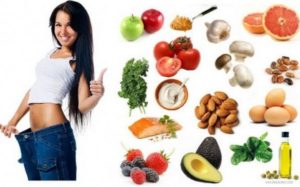How to Waste Less Food
 This is one of the issues with our modern fast-paced society, the question of food waste. And we can start back as early as the 1940s in the United States. During the Second World War, in order to avoid food shortages, the United States government encouraged citizens to stop making wasting food.
This is one of the issues with our modern fast-paced society, the question of food waste. And we can start back as early as the 1940s in the United States. During the Second World War, in order to avoid food shortages, the United States government encouraged citizens to stop making wasting food.And in particular, they encouraged people not to throw away leftover meals, and to give them to their dogs instead. The dog bag was born: the famous doggy bag. With portions on plates often gargantuan, the United States then democratized the practice so that customers could shamelessly bring their leftovers home.
This bag has been widely anchored in Anglo-Saxon and Asian culture ever since. But not yet in France, where the fear of passing for a big stingy remains very present. But from 2021, everything will change in France since restaurateurs will have the obligation to provide doggy bags to the customers who request it.
So it is certainly not with the dog bag that we are going to solve the problem of food waste, but mentalities are changing in a context where waste is less and less tolerated. If we want to reduce the cost of food waste disposal and the effect on the environment, then we should all make an effort to reduce food waste.
What do food losses represent in our country?
Each year in France, nearly 10 million tonnes of edible food go into the trash bin. And if we take into account the whole chain, from production to consumption, it’s the equivalent of 150 kilos of food per year and per capita that ends up being sent directly to the dumpster. For the consumption phase alone, each of us throws away 30 kilos of food, including 7 kilos of unconsumed and still packaged food waste.
Food waste is unbearable because it represents a huge waste of natural resources such as arable land and water. But it is also greenhouse gas emissions that are emitted for no reason. According to the Environment and Energy Management Agency (ADEME), this represents 3% of all national emissions worldwide due to the energy required to produce, transform, conserve, pack and transport food. Such food waste is also estimated to generate losses between 12 and 20 billion euros per year in France only, and finally it is a social and ethical issue at a time when 1 in 10 people in that country are in a situation of food insecurity .
How can we fight this scourge?
First of all, by modifying our habits at home so that they are more respectful regarding our food. Individual losses represent 33% of the entire food chain. But that’s not enough. This is the reason why France, which wants to cut waste by half by 2025, recently adopted a law which strengthens the provisions and which plans more restrictive measures by extending the law to catering and industry after distribution.
It is mostly a problem of public awareness. It is also a problem of finding better ways to reduce food waste along the food distribution channels. Improving logistics, introducing more flexibility regarding which crops are planted, favoring better preservation methods and emphasizing more local production venues, these are some pointers that could help reduce our food waste.
What Food to Eat to Lose Weight
 Having a healthy diet such as diets low in a calorie and getting enough exercise are the best ways to attain a flat stomach. However, if in case you are having a bloated belly, then try sipping down some liquids, snacking on, or else mixing in some clever foods, which cannot just get rid of water retention, but also help to delay cravings, boost metabolism, and keep you full for a longer period. Furthermore, most of these foods taste really good.
Having a healthy diet such as diets low in a calorie and getting enough exercise are the best ways to attain a flat stomach. However, if in case you are having a bloated belly, then try sipping down some liquids, snacking on, or else mixing in some clever foods, which cannot just get rid of water retention, but also help to delay cravings, boost metabolism, and keep you full for a longer period. Furthermore, most of these foods taste really good.Below is a list of foods to eat in order to lose weight:
1. Acai
Acai berries may not be new to you. But do you know it has anti-oxidant properties? Well, these fruits are rich in dietary fiber and essential fatty acids. Acai can help to accelerate digestion and offer more energy. If you go to the gym regularly after work, then you basically need this kind of fruit. Add them to your breakfast cereal in the morning or try whipping up a smoothie bowl for a nourishing snack.
2. Green Leafy Vegetables
Get healthy by adding a portion of leafy greens at each meal to lessen water retention. Vegetables that are intensely low in calories are Kale, spinach and romaine lettuce. These green leafy vegetables are full of fiber and give a great number of vital vitamins and minerals that heal water retention without producing the swelling and discomfort that some other vegetables may produce.
3. Green Tea
Are you one of those who is dependent to their builder’s brew? Now is the time for a change. Changing to green tea has been recognized to support the body in flushing out extra fluids, aiding to calm bloating of the stomach which is caused by commonly known as water retention. It has also been established to speed up the metabolism, which can help the burning of excess fats in the body.
4. Apple Cider Vinegar
Apple cider vinegar is very popular nowadays in giving the body a detoxification effect. Hence, if you are considering for a rapid fix body detox, try having a few capfuls of apple cider vinegar to your daily meals. This kind of vinegar acts as a digestive tonic which helps to eliminate detrimental bacteria in the intestines, flushing out toxins, and let go of water retention in the stomach. It’s best to add enough amount to vegetables in cooking, or as a dressing over your salad.
5. Garlic
Who would have thought that garlic is also an antioxidant agent? It may give your breath a stinky smell a bit, however, every clove of garlic is packed with toxin-battling antioxidants. It also has a naturally arising chemical called allicin. When being digested, allicin responds with the blood to make a product that has a capacity of killing off many detrimental bacteria and viruses that your body might be protecting, the digestive tract is just one. A healthy gut is vital to attaining a slimmer body, making your tummy flat. Add up a few raw cloves to your diet just before serving to get the best out of it.6. Brown Rice
Eating a greater amount of carbohydrates may lead to a bloated stomach. If you are on a diet, picking brown rice instead of a traditional white rice is a wiser move. Brown rice is well-known as a complex carbohydrate which flattens and tones your belly. It also has muscle-strengthening protein and contains a rich supply of energizing B vitamins, which could help burn the calories even quicker.
7. Avocado
Avocado is frequently paired with spicy food since it pacifies the digestive system once it is irritated by the heat. Avocado also has potassium, which helps to control fluid balance, together with magnesium, which inhibits constipation.